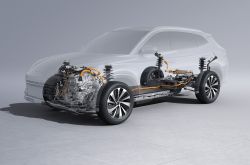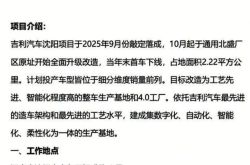Zhipingfang and Dynam Robotics Showcase New Innovations; Donyee Technology and InBody Intelligence Secure Funding
![]() 04/21 2025
04/21 2025
![]() 477
477
Editor: Member, Embodied Learning Society
Zhipingfang Unveils "AlphaBot 2"
Zhipingfang has officially launched AlphaBot 2, the next-generation versatile intelligent robot, and announced a comprehensive upgrade to its "AGI Terminal" strategy. This includes advancements in embodied large model technology, product iterations, the establishment of in-house production lines, and commercialization objectives.
AlphaBot 2 is equipped with a full-stack, proprietary VLA large model, offering full-body and comprehensive capabilities. This enables visual-language-action functionalities across various environments, from desktops to open spaces, single-arm to full-body coordination, and simple tasks to long-range reasoning.
Dr. Guo Yandong, founder and CEO of Zhipingfang, stated at the press conference, "Every few years, an exceptional intelligent terminal emerges, transforming our living habits. Following PCs, smartphones, and smart cars, we now stand at a pivotal juncture for intelligent terminals."
Dynam Robotics Introduces Family of Products
Dynam Robotics presented its "family products": the multi-dimensional, high-resolution, high-frequency visuo-tactile sensor DM-Tac W; the multi-dimensional tactile perception five-finger dexterous hand DM-Hand1; and the portable wearable teleoperation data acquisition system DM-EXton. These products establish a seamless connection between robot perception, operation, and learning.
DM-Tac W is the world's first multi-dimensional, high-resolution, high-frequency visuo-tactile sensor, with 40,000 sensing units per square centimeter, hundreds of times denser than current dense array tactile sensors. Coupled with DM-Hand1, featuring Dynam's groundbreaking millimeter-thick visuo-tactile sensor, it can sensitively detect attributes like softness, hardness, texture, and interactive attributes such as contact force distribution and events, enabling robots to execute challenging tasks like adaptive grip force control, delicate manipulation of fragile parts, and precision component assembly. DM-EXton is specifically designed for robot remote control, data acquisition, and learning training, outperforming industry-standard mechanical robot teaching systems in weight, degrees of freedom, connection methods, acquisition frequency, and compatibility.
Currently, Dynam's product series has achieved small-scale applications in embodied intelligence, smart logistics, smart manufacturing, laboratory automation, and other scenarios. These products are now openly available for purchase by global developers. In 2025, product lines such as DM-Tac F and DM-Hand2 will be successively released.
Zhongqing's Two Humanoid Robots Enter Mass Production
Zhongqing Robotics announced that the lightweight, highly dynamic, and fully open humanoid robot "Zhongqing ENGINEAI PM01" is now available on Zhongqing's JD.com flagship store for 188,000 yuan, while the Zhongqing ENGINEAI SA01 is priced at just 42,000 yuan.
Zhongqing PM01 achieves dynamic balance and gait adaptive adjustment, making it the world's first natural gait walking robot and the first humanoid capable of executing a front somersault. Zhongqing SA01 is a highly expandable open-source general-purpose bipedal intelligent agent, weighing approximately 40KG with a maximum torque of 160 N.m and a rated torque of about 50 N.m. Equipped with a proprietary S160 motor and integrated motion control algorithms, it demonstrates exceptional straight-knee walking capabilities.
Donyee Technology Closes Angel+ Funding Round
Donyee Technology announced the completion of its Angel+ funding round, bringing its total funding to over 100 million yuan. This round was led by Qingzhi Capital, with participation from Puchao Capital, and oversubscribed follow-on investments from existing shareholders Fengrui Capital and Z Fund (Wisdom Spectrum Ecology Fund), alongside continued investments from Linge Venture Capital, Sunyard, Yinxing Valley Capital, and Tsinghua University Alumni Seed Fund. The funds will primarily be allocated to technology research and development, team expansion, and product commercialization.
Donyee Technology has developed a new generation of end-to-end motion control model architecture that bypasses the need for sub-task breakdown, directly outputting robot joint control commands. This significantly enhances the generalization and stability of robot behavior and movement. On the hardware front, it employs a full-stack proprietary approach to build a new generation of versatile humanoid robots. Its unique lightweight, high-burst, quasi-direct-drive cycloidal joint series modules significantly boost the robot's motion performance while maintaining a more anthropomorphic design.
InBody Intelligence Secures Consecutive Funding Rounds
InBody Intelligence successfully raised tens of millions of yuan in seed and seed+ funding rounds. The seed round was invested by Joy Source Asia, while the seed+ round was jointly funded by Joy Source Asia and Hangzhou West Lake Science and Technology Venture Capital. The funds will be utilized for the development and training of the robot's right brain, commercialization, and team building.
InBody Intelligence's proprietary spatial large models and industrial scenario robots provide downstream solutions characterized by low cost, high reliability, and modular hardware and software coordination, gradually penetrating from flexible processes in the light industry to the service sector and various consumer-end scenarios. This year, InBody Intelligence will focus on advancing the robot brain, enhancing its external world understanding and task execution capabilities, to accelerate the adoption of L4-level embodied intelligence in daily production and life.
Weitai Robotics Announces Completion of Two Funding Rounds
Weitai Technology announced the completion of nearly 100 million yuan in consecutive angel and angel+ funding rounds. The angel round was led by Xiaomi Strategic Investment, with participation from Kuanqiao Hengsong, Yarui Capital, iCANX Fund, Meihua Venture Capital, and Weiguang Venture Capital, alongside follow-on investments from existing shareholders. The angel+ round was jointly invested by Vertex Ventures, Yarui Capital, iCANX Fund, Meihua Venture Capital, and Weiguang Venture Capital, with Wanjia Capital serving as the exclusive financial advisor.
Dr. Li Rui, founder of Weitai Robotics, has been researching robots and computer vision since 2005. During his PhD at MIT, he studied under Professor Edward Adelson, a member of the U.S. National Academy of Sciences and the American Academy of Arts and Sciences. Together with his mentor, he pioneered the research direction of vision-based tactile sensors (visuo-tactile) and developed the world's first ultra-high-resolution robot visuo-tactile sensor: the GelSight fingertip sensor.
XPeng Iron Humanoid Robot Training Initiated
XPeng Motors announced that Iron will enter large-scale industrial mass production in 2026 and has already commenced Iron training at its Guangzhou factory. Standing at 178 centimeters tall and weighing 70 kilograms, Iron boasts 62 active degrees of freedom throughout its body and 22 movable degrees of freedom in its hands. It is equipped with the latest proprietary Turing AI chip offering 3000T computing power and an intelligent driving-derived Hawk Eye vision system providing a 720° unobstructed field of view.
First Humanoid Robot Marathon Concludes
The results of the 2025 Beijing Yizhuang Humanoid Robot Half Marathon are officially announced, with "Tiangong Ultra" from the Beijing Humanoid Robot Innovation Center emerging victorious in 2 hours, 40 minutes, and 42 seconds, followed by Songyan Power's N2 robots in second and third place.
"Tiangong Ultra" stands at approximately 180cm tall and weighs around 55KG. Utilizing wireless piloting technology, it accomplishes follow navigation and long-range path planning. Relying on its motion control algorithms and multi-modal sensors, coupled with ultra-wideband wireless technology, it guides the robot to perform target tracking, calculate its position, and autonomously adjust its running direction and speed in real-time to complete the race from the starting point to the target.
During the race, "Tiangong Ultra" employed battery quick-change technology, enabling extended operational capabilities.
Songyan Power, known for its compact and agile design, stands at 1.2 meters tall and weighs 30 kilograms, with capabilities including large-step walking, running, single- and double-foot jumping, and dancing. Its running speed has been measured at up to 3.5 meters per second, with a starting price of 39,900 yuan.
Unitree Responds to Marathon Incident
During the marathon, Unitree Technology's G1 humanoid robot fell during the race but subsequently stood up to continue. In response, Unitree Technology issued a statement: "Unitree has not participated in any races recently and has been primarily focused on preparing for the live broadcast of Unitree humanoid robot fights. The timing of the humanoid robot fight live broadcast is currently undetermined." It further clarified that Unitree's G1 humanoid robot has been shipping since last year and has been sold to customers worldwide, "therefore, several independent teams utilized our robots in this marathon."
It is understood that Unitree Technology stated that the humanoid robot fighting competition is anticipated to take place from May to June this year and will be broadcast live across various platforms of China Media Group.
Kunzhong Capital's Yao Haibo: Robot Sector Faces Reshuffling in 2025
Yao Haibo believes that while humanoid robots represent the ultimate form of versatile robots, pursuing a "humanoid" form at this stage is not the optimal solution. Breakthroughs in single-point capabilities (like motion control, reinforcement learning, etc.) hold greater investment value. Yao Haibo divides the development of robots into three stages: simple movement and manipulation in the 1.0 stage, generalized scenario applications in the 2.0 stage, and efficient autonomous work in the 3.0 stage.
As industry enthusiasm wanes, the market will place greater emphasis on the actual value creation capabilities of robot enterprises. Opportunists may swiftly exit, whereas entrepreneurs who genuinely love their work and can translate their passion into productivity will emerge as leaders.








